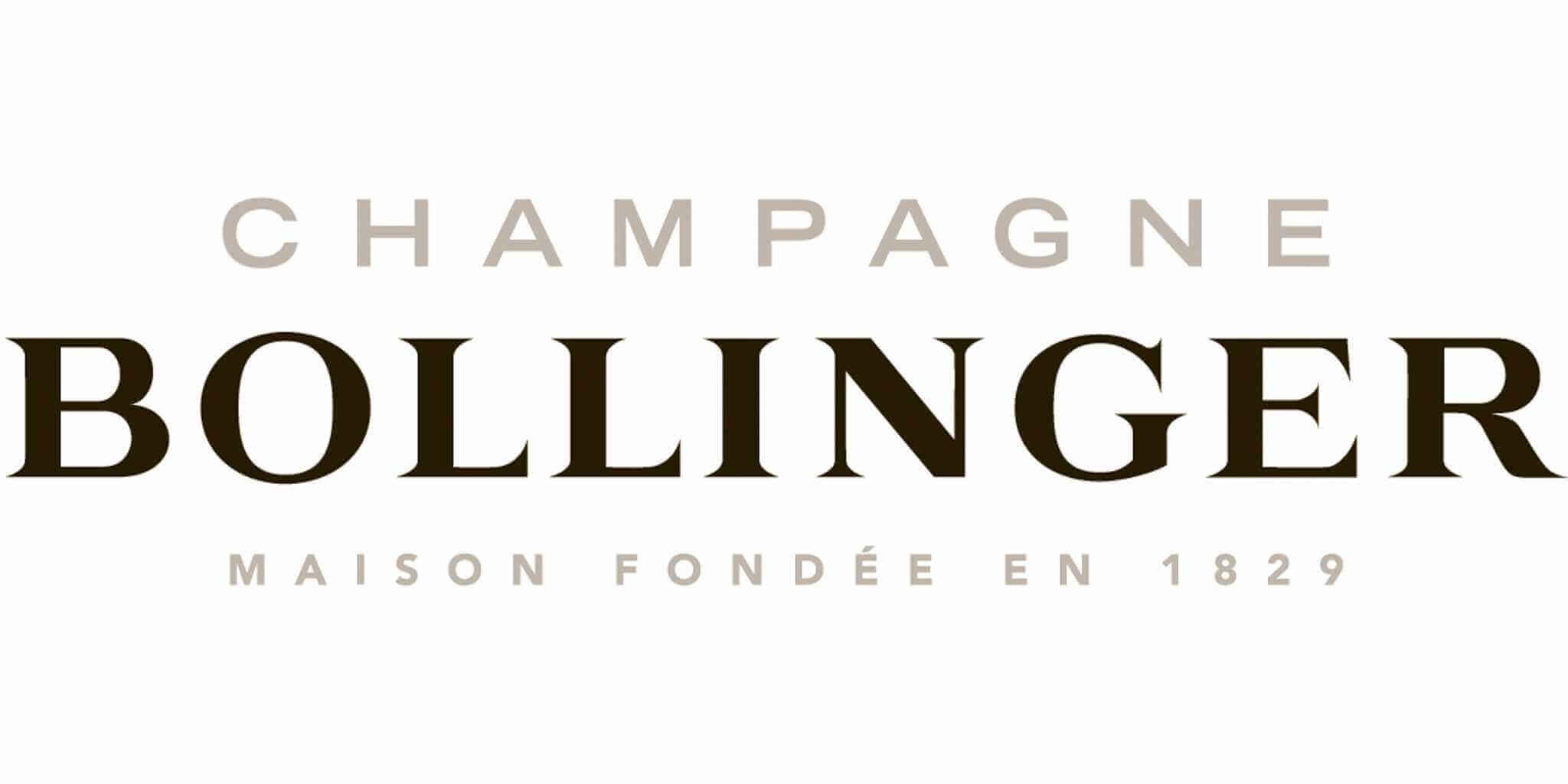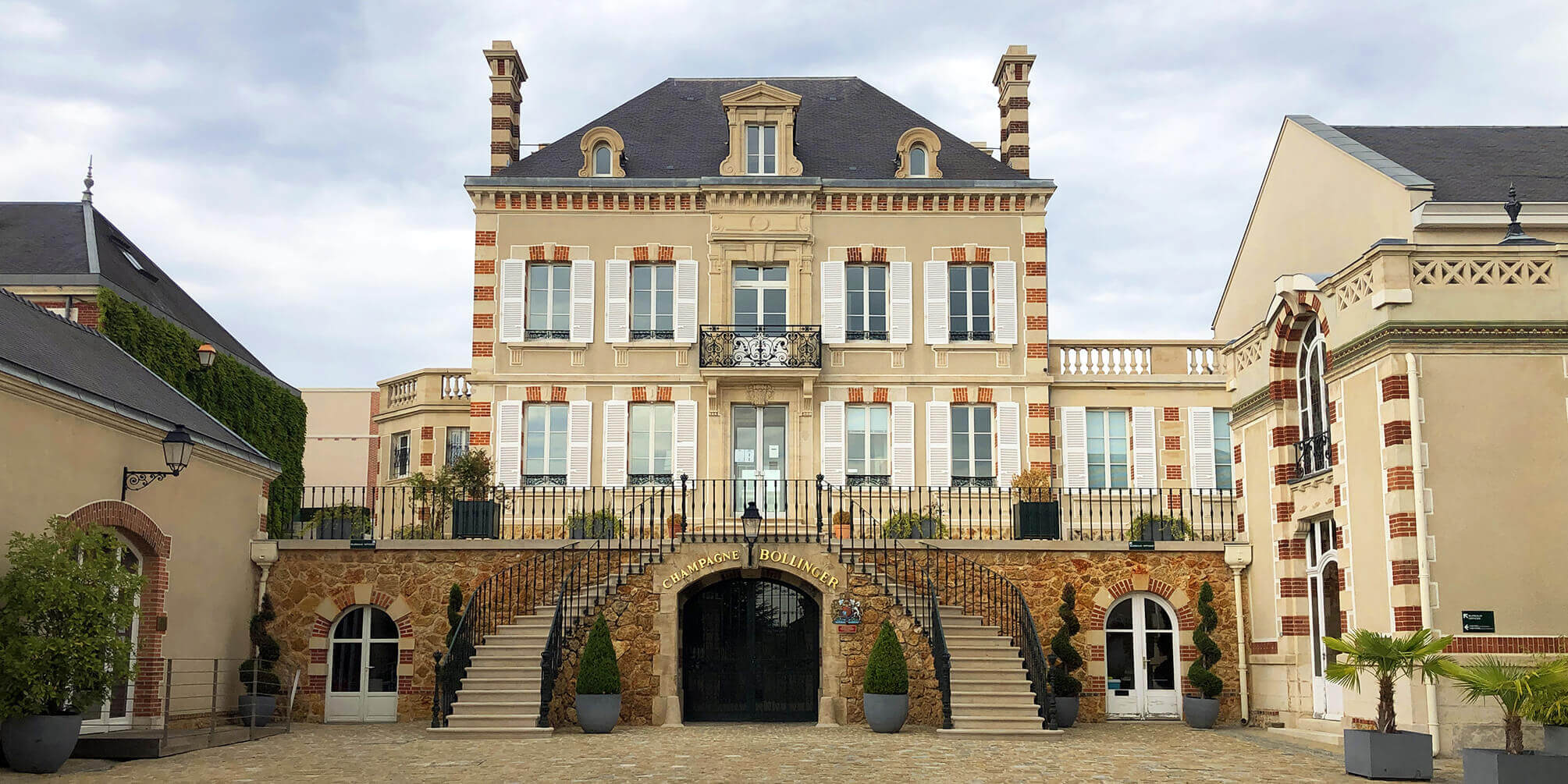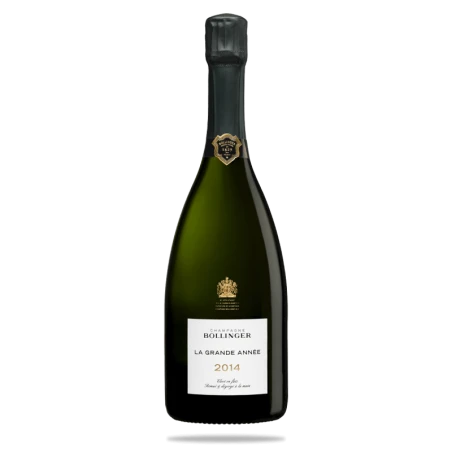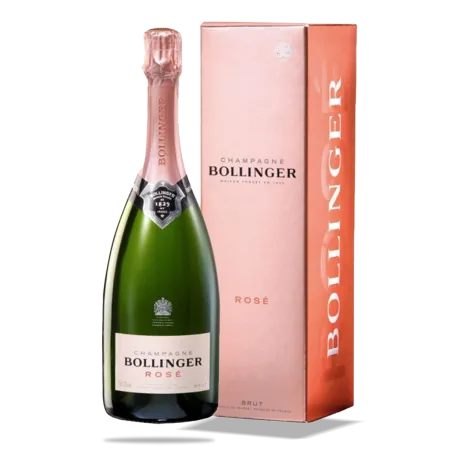
The family home at 16, rue Jules Lobet in Aÿ still resonates with the presence of Madame Bollinger. In the elegant simplicity of the place, in the delicacy of each detail, we find her discreet refinement. On the other side of the courtyard, the archive building is where old photos, account books, menus with surprising agreements are preciously stored... Madame Bollinger kept everything with the greatest care. The garden is reached by crossing the museum of old tools: rare pieces of wood and metal bear witness to a bygone era. Under the venerable trees is buried a secret the ice house where once they kept the provisions. Between the high walls of the garden, the noises of the village seem to fade away: everything here breathes calm and beauty, time seems to stand still.
The spirit of the house Bollinger
The history of the House Bollinger begins with the meeting of three men: Athanase de Villermont, a soldier from a noble family who had inherited a vineyard, Joseph Bollinger, a German who sought to work in the Champagne wine trade, and Paul Renaudin, a Champagne enthusiast.
Since 1829, the House Bollinger has been producing great champagnes with a powerful, refined and complex style. Virtuoso wines, which are the result of a constant requirement: the "à-peu-près" has no place at Bollinger. Even in the smallest details, a form of perfection is constantly sought. An uncompromising independence of spirit, in the service of a distinction without ostentation: this elegance of the Champagne region has won over the Crown of England, which, since 1884, has awarded the House the very prestigious Royal Warrant, the mark of the official suppliers to the Court.
The vineyard Bollingerthe vineyard covers 179 hectares, the majority of which are Grands and Premiers Crus. It is mainly planted with Pinot Noir, a demanding grape variety whose intensity constitutes the backbone of the style Bollinger. The continuity of this style is ensured by an exceptional collection of more than 800,000 reserve magnums: the House Bollinger is the only one to have such a precise palette of aromas to complete its blends. The best vintages benefit from a vinification in wood thanks to the 4000 small old barrels: a commitment to extreme quality. The House gives its wines more than twice the aging time required by the rules of the appellation. Not for the sake of coquetry, but because a great wine must have the luxury of time to express its personality.
Because quality begins with the precision of the gesture, each step of the wine making process Bollinger corresponds to a specific skill. Passed on and perfected from generation to generation for almost two centuries, these manufacturing secrets are one of the greatest assets of the House. At Bollinger, we never give in to the easy way out: where ancestral techniques are the guarantee of a better quality, we make the demanding choice to preserve them. Hand stirring of the bottles, corking of the reserve magnums and vintage vintages, coopering on the premises... the House perpetuates rare techniques and precious trades. It is the first Champagne House to obtain the renowned Entreprise du Patrimoine Vivant (Living Heritage Company) label, which distinguishes excellent craft skills.
Bollinger has a vineyard made up of vines from various crus, the great crus of the Montagne de Reims of course, but also the beautiful terroirs of the Marne Valley.
The Grande Année 1996 was certainly a landmark vintage in the great hours of the champagne house Bollinger, because all the qualities of champagne Bollinger are magnified here!
The Grandeur of the Champagne House Bollinger
With a lot of common sense, Mrs Bollinger knew how to federate around her the members of the family the most suitable to take over from her. It is first of all to Claude d'Hautefeuille, husband of her niece, that she teaches the workings of the House. He became Director in 1950, and gave impetus to an ambitious modernization, while maintaining the quality requirements of Bollinger. Madame Bollinger entrusted him with the presidency in 1971, remaining very present until her death six years later. Christian Bizot, nephew of Madame Bollinger, succeeded Claude in 1978. A great traveler, he went, like his "Aunt Lily" before him, to meet sommeliers, restaurant owners and wine merchants to help them discover the wines of the House. A great President, he is known for his outspokenness and his freedom of tone.
Progress without betraying the spirit.
The man who took over the head of the company in 1994 is none other than the great-great grandson of Joseph Bollinger, its founder! After starting his career in Chile, Ghislain de Montgolfier continued to develop the company, always striving for excellence. He continues to voluntarily limit the volumes produced in order to progress on the path of quality, without ever betraying the spirit of the company Bollinger. A tireless worker, Ghislain is also a man with a great sense of humor who knows how to combine scientific rigor with the enthusiasm of conquest. In 2007, his technical skills earned him election to the head of the Union des Maisons de Champagne and to the co-presidency of the Comité interprofessionnel du vin de Champagne.
The house today and tomorrow.
In 2008, a new President was appointed, who was not a member of the family. He is Jérôme Philipon, a Champagne native with an impressive background, coming from large industrial groups. This is the first time in the history of Bollinger that the destiny of the House is entrusted to a person outside the family. With her, Jérôme Philipon continues the development of Champagne Bollinger and guarantees the continuity of the House's principles and values. In 2017, Charles-Armand de Belenet became Managing Director of Champagne Bollinger
With him, the company continues to preserve its artisanal know-how while integrating the best of innovative technologies, in order to pursue the commercial and qualitative development of the brand in the future.

The house Bollinger, fiercely independent and as British as James Bond, has survived the centuries. Founded in 1829, it is one of the few champagne houses that are still family-owned. This is probably partly because its vineyards cover two thirds of its needs.
Thanks to its English-sounding name and its links with royalty - Bollinger is an official supplier to the Crown since the time of Queen Victoria -, Bollinger champagne has been adopted by English high society. It runs in the veins of James Bond and it flowed freely in Evelyn Waugh's Oxford, who renamed the Bullingdon Club " Bollinger Club" in Grandeur and Decadence. In more recent times, "Get out the Bollin-ger" has become a classic Friday night fixture in wealthy British circles
It is tempting to imagine a Lord Bollinger who, on his return from his Grand Tour, would have stopped in France and founded a House to supply his friends back in England. It is clear that the refinement of the House seduced the English: before the Second World War, they drank 85% of the total volume sold. However, the House has German origins, like the British royal family
Born in the Duchy of Württemberg, Joseph Bollinger first worked as a salesman for Athanase de Villermont, an aristocrat who also employed Paul-Joseph Renaudin from Champagne. The de Villermont family had lived in Aÿ since the 15th century and owned 11 hectares of vineyards in Aÿ and Cuis. De Villermont decided to create his own champagne but, as he did not want to put his name on the labels - perhaps finding it vulgar - he founded the Maison Renaudin-Bollinger & Cie in 1829
After his death, three years later, Bollinger was quick to expand the vineyard: he bought a third vineyard, in Verzenay. In 1837, he married the daughter of Villermont, Louise-Charlotte. Renaudin died without an heir in 1854, but his name would remain on the labels for more than a century. Joseph Bollinger and Louise-Charlotte found themselves alone at the helm. Today, the House still belongs to their descendants. It must not have been easy to stand up to the family shareholders of the company and to the large groups ready to absorb it. But the 165 hectares of vineyards of the House - 85% of which are classified as "grand cru" or "premier cru " - must have helped it through the difficult times
In any case, the House is very attached to its family character as stated on its website: "For five generations
In 1858, the House opened an office in London, which was later absorbed by the wine importer Ludwig Mentzen-dorff. 40 years later, the latter, bought by Bollingerforty years later, the latter, which was acquired by the company, accounted for 96% of sales across the Channel, 89% of which went to the United Kingdom and 7% to the colonies of the British Empire. At Victorian and later Edwardian hunting parties, "the boy" was just that, Bollinger, as a young boy riding a pony loaded with Bollinger followed the hunters to quench their thirst. Today, the United Kingdom accounts for only one-tenth of sales

In 1911, Bollinger launched its Special Cuvée for the United Kingdom, and this characterful, richly flavored yet brut wine became emblematic of the House's style. Today, it is composed of 60% pinot noir, 25% chardonnay and 15% meunier, with half of the wine fermented in oak barrels so that the wood slightly flavors the final blend. The maturation on lees of this cuvée lasts at least three years, and a tenth is made of reserve wines up to 15 years old.
After the death of Jacques Bollinger in the middle of the Second World War, his Scottish wife, Lilly, took over. A true matriarch of the widow Clicquot's caliber, she revived the business and innovated in 1961 with the release of Bollinger R.D. (" Récemment Dégorgé") which, as an expression of a vintage, shows what ten years of aging on the lees can give.
His nephew, Christian Bizot, helped negotiate the deal with James Bond producer Cubby Broccoli for Agent 007 to adopt Bollinger. Next came Absolutely Fabulous, a popular British TV series in which dipsomaniac Patsy Stone (Joanna Lumley) mixes vodka and Bollinger"The last mosquito that bit me," she mumbles, "ended up at the Betty 'Ford Center [clinique de désintoxication]". Although there was some concern at Bollinger that the brand would suffer, it would seem that all publicity is good publicity as sales have continued to climb.
What are the best champagnes?
Bollinger is part of the best Champagne houses, with are a blend of 3 grape varieties: Pinot Noir, Pinot Meunier and Chardonnay. They come from the best crus of the Champagne region Bollinger and are vinified in oak barrels.
Who drinks Bollinger?
Since 1956, the year Ian Fleming's novel Diamonds are Forever was published, James Bond has been drinking Bollinger.
In 1884, it became the first official champagne of the British crown. Edward VII adored it and even called it his " Bolly darling". James Bond started to drink Bollinger in 1973, as Roger Moore, in Live and Let Die. The guy orders a bottle of Bollinger in his hotel room
But why Bollinger?
The James Bond movie, how much money does the champagne brand spend on each production for this splendid marketing operation? Clément Ganier, marketing director of the brand, answers this question:
Not a cent, there is no money circulating. There is not even a contract. In 1973, the crew was looking for bottles of champagne for the shoot. They asked Moët to provide them, but the latter refused. Christian Bizot, president of Bollinger at the time, offered to help. We sent bottles for the shoot and for the preview. The producer, Albert R Broccoli, asked if he could mention the brand in the film. From there, a "gentlemen's agreement" was born.



